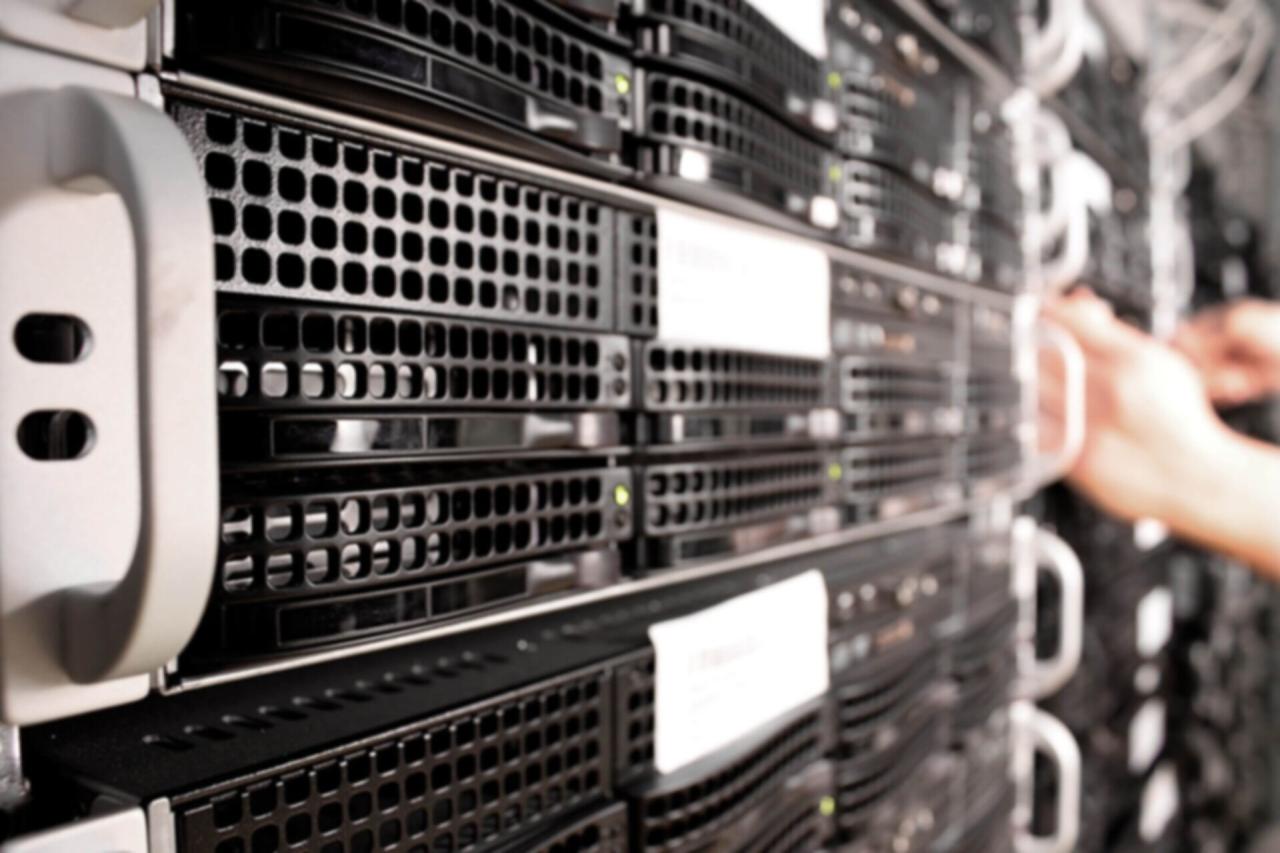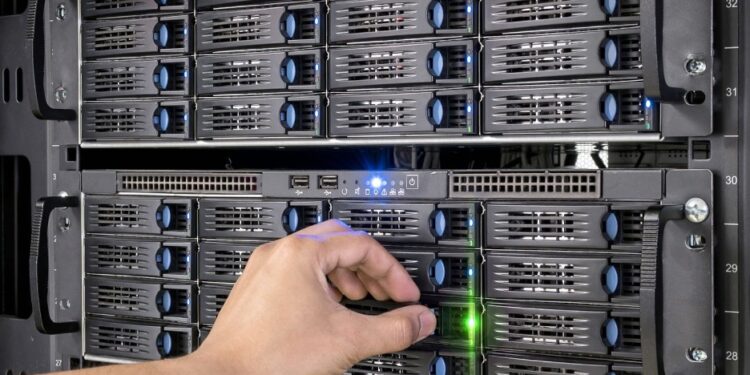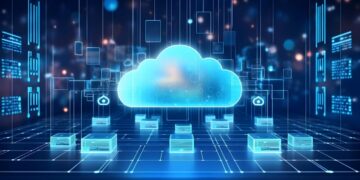In the dynamic and hyper-competitive landscape of 2025, a small business’s digital infrastructure is no longer an optional add-on—it is the central nervous system that dictates its operational efficiency, security, and potential for growth. The old model of a few computers sharing files through a network folder is outdated, insecure, and simply not scalable. A dedicated server, whether a physical box in your office or a virtual instance in the cloud, is the crucial next step for any small business looking to professionalize its IT, secure its data, and streamline its operations.
This comprehensive guide serves as your definitive roadmap to understanding, choosing, and implementing the right server solution for your small business. We will demystify complex technical concepts and provide a detailed analysis of all the options, from a simple Network Attached Storage (NAS) device to a powerful on-premise tower server and the flexible world of cloud computing. We’ll explore the critical hardware and software considerations, the essential functions a server provides, and a clear framework for making a decision that will power your business for years to come.
The Modern Role of a Small Business Server

A server is a powerful computer designed to provide shared services to other computers on a network. Its value extends far beyond simple file storage. In 2025, a small business server is a multi-faceted tool that handles a wide range of mission-critical tasks, providing stability, security, and a professional edge.
A. Centralized Data Storage and File Sharing: The most fundamental function of a server. Instead of having important documents scattered across different employee computers, a server provides a single, centralized location. This ensures everyone is working on the same, most up-to-date versions of files, and it simplifies access and collaboration.
B. Automated Data Backup and Business Continuity: Relying on individual backups (or worse, no backups) is a recipe for disaster. A server can be configured to perform automated, regular backups of all your business data, protecting against hardware failure, cyberattacks, or accidental deletion. This is the cornerstone of any effective disaster recovery plan.
C. Hosting Essential Business Applications: From a customer relationship management (CRM) system and an accounting package to a project management tool or a shared database, a server can host the core applications that your team uses daily. This eliminates the need for individual software installations and ensures seamless access for all users.
D. Secure Remote Access: In an era of remote and hybrid work, providing secure access to company files and applications from anywhere is crucial. A server can be configured with a virtual private network (VPN) or other secure remote access tools, allowing employees to work from home, the road, or a coffee shop while maintaining data security.
E. Enhanced Security and Control: A server provides a centralized point of control for your network. You can implement robust security policies, manage user permissions, and monitor network activity more effectively. This is a critical step in protecting sensitive data from unauthorized access or malicious threats.
F. Resource Sharing: A server can act as a central hub for shared resources like network printers, scanners, or specialized hardware, making them accessible to all employees without the hassle of individual connections.
On-Premise vs. Cloud
The first and most important choice you will make is whether to host your server physically on your business premises or to “rent” a virtual server in a data center, known as a cloud server. Each option has a distinct profile of advantages and disadvantages.
On-Premise Servers
An on-premise server is a physical piece of hardware that you purchase and install in your office. It is the traditional model of server ownership, giving you complete control over your hardware and data.
- Advantages:A. Total Control and Customization: You have complete ownership of the hardware. This allows you to install any operating system, configure the network settings exactly as you see fit, and physically access the machine whenever you need to. This level of control is essential for specific compliance requirements or proprietary applications.B. Predictable Costs: After the initial capital expenditure, your recurring costs are limited to electricity, cooling, and potential hardware upgrades. This makes budgeting straightforward and can be more cost-effective in the long run for businesses with stable, long-term resource needs.
C. Maximum Performance and Security: The server’s entire resources—CPU, RAM, and storage—are exclusively yours. You won’t suffer from the “noisy neighbor” effect, where another user’s activity on a shared platform impacts your performance. You also have full control over physical and network security.
D. No Reliance on Internet Connectivity: Your server and data are located on your local network, meaning they are accessible even if your internet connection goes down. This is a significant benefit for businesses in areas with unreliable internet service.
- Disadvantages:A. High Upfront Cost: Purchasing a server, and potentially an uninterruptible power supply (UPS) and a secure cabinet, is a significant capital expense. This can be a major barrier for startups or small businesses with limited budgets.B. Requires Technical Expertise: You are responsible for all aspects of server management, including installation, configuration, security patches, hardware maintenance, and troubleshooting. This requires a dedicated IT staff member or a contract with a managed service provider (MSP), which adds to the operational cost.
C. Scalability Challenges: Scaling an on-premise server is a manual and time-consuming process. If you need more power or storage, you have to purchase, install, and configure new hardware, which can lead to downtime.
D. Disaster Recovery Planning: You are solely responsible for creating and maintaining a robust disaster recovery plan. This includes offsite backups, which can be complex to manage.
Cloud Servers
A cloud server is a virtual instance running on a remote data center operated by a provider like Amazon Web Services (AWS), Google Cloud Platform (GCP), or Microsoft Azure. You pay for the resources you use on a subscription basis.
- Advantages:A. Unmatched Scalability: Cloud servers can be scaled up or down in minutes. If your business experiences a sudden surge in traffic or a new project requires more computing power, you can instantly provision more resources without any hardware changes.B. No Upfront Capital Expenditure: The pay-as-you-go model eliminates the need for a large initial investment, making it accessible to businesses of all sizes. You only pay for what you consume, which can be highly cost-effective for variable workloads.
C. Reduced Management Burden: The cloud provider is responsible for all the physical hardware maintenance, security, and infrastructure management. This allows your team to focus on core business tasks.
D. Built-in Redundancy and Reliability: Cloud providers operate with multiple data centers and built-in redundancy, ensuring high availability and robust disaster recovery. If one server or data center fails, your services can be automatically transferred to another location with minimal downtime.
- Disadvantages:A. Variable and Unpredictable Costs: While flexible, the pay-as-you-go model can lead to “bill shock” if you are not carefully monitoring your usage. Data transfer fees, API calls, and other hidden costs can quickly accumulate.B. Reliance on Internet Connectivity: Your server and data are only as accessible as your internet connection. A slow or unreliable connection can severely impact your business operations.
C. Less Control: While you have control over the virtual machine, you do not have root access to the underlying hardware. This can be a limitation for businesses with highly specific security or compliance requirements.
D. Shared Responsibility for Security: The cloud operates on a shared responsibility model. While the provider secures the underlying infrastructure, you are still responsible for securing your data and applications within that infrastructure. Misconfigurations are a common cause of security breaches.
Types of On-Premise Servers

If you decide an on-premise server is the right choice, you have three primary hardware types to consider.
A. Network Attached Storage (NAS)
A NAS is a perfect entry-level server for many small businesses. It’s a dedicated box with one or more hard drive bays and a simplified operating system, purpose-built for file sharing and data backup.
- Key Features:
- Simplicity: NAS devices are incredibly easy to set up and manage, often through a user-friendly web interface.
- Cost-Effectiveness: They are significantly cheaper than a full-fledged server and use less power.
- Functionality: Modern NAS devices from brands like Synology and QNAP have evolved into multi-purpose servers. You can install apps for media streaming, video surveillance, email servers, and even run lightweight virtual machines or containers.
- Best For:
- Small teams (1-15 people)
- Businesses needing centralized file storage and automated backups
- Those with limited IT expertise
- Offices that need remote access to files
B. Tower Servers
A tower server looks like a large, powerful desktop computer. It’s the most common type of server for small to medium-sized businesses and offers a great balance of power, scalability, and cost.
- Key Features:
- Power and Flexibility: Tower servers are built with more powerful components—like server-grade CPUs (Intel Xeon or AMD EPYC), error-correcting code (ECC) RAM, and redundant power supplies—than a NAS. They can handle more demanding tasks like running multiple applications or virtual machines.
- Expansion: They have ample space for additional hard drives, memory, and expansion cards.
- Compatibility: They can run a full server operating system, like Windows Server or Linux, giving you maximum flexibility for software and applications.
- Best For:
- Businesses with 15+ employees
- Organizations running resource-intensive applications or databases
- Teams with some in-house IT expertise
- Companies that need to run multiple services on a single machine
C. Rack Servers
A rack server is a flat, rectangular box designed to be mounted inside a standard server rack. They are built for maximum density and performance, and are typically used by larger businesses or those with limited floor space.
- Key Features:
- Space Efficiency: By stacking them in a rack, you can house a large number of servers in a small physical footprint.
- Advanced Cooling and Management: Racks are designed for optimal airflow, and the servers often have hot-swappable components, making maintenance easier.
- High Performance: Rack servers come in various sizes and can be configured with the most powerful hardware on the market.
- Best For:
- Businesses with a dedicated server room
- Companies with a need for a high density of servers
- Organizations with significant IT infrastructure
The All-Important Hardware Decisions
Choosing the type of server is just the beginning. The internal components determine its performance and reliability.
A. CPU (The Brain): Unlike a desktop CPU, a server CPU is optimized for reliability and handling many concurrent tasks rather than raw speed for a single task. Look for server-grade processors like Intel Xeon or AMD EPYC. More cores and threads are generally better for multitasking and virtualization.
B. RAM (The Working Memory): For a server, more RAM is always better. It allows the server to run more applications and handle more simultaneous user connections without slowing down. Look for Error-Correcting Code (ECC) RAM, which can detect and correct memory errors, significantly improving reliability.
C. Storage (The Heart): This is where your data lives, and it’s a make-or-break component.
* Type: Solid-State Drives (SSDs) and NVMe drives offer incredible speed, which is crucial for applications and databases. Hard Disk Drives (HDDs) are more affordable for bulk storage. A common strategy is to use SSDs for the OS and applications, and HDDs for mass data storage.
* RAID (Redundant Array of Independent Disks): RAID is a technology that combines multiple physical drives into a single logical unit to improve performance and, more importantly, provide data redundancy. You should never run a server without RAID. RAID 1 mirrors your data on two drives. RAID 5 stripes your data across multiple drives with a parity drive, so if one drive fails, your data is safe and can be rebuilt.
D. Power Supply: A server running 24/7 needs a reliable power supply. Look for redundant power supplies, which means there are two power units. If one fails, the other takes over instantly, preventing downtime.
E. Network Interface Cards (NICs): While most servers come with a Gigabit Ethernet (1GbE) port, consider upgrading to 2.5GbE or 10GbE if your business frequently transfers very large files or has a high volume of network traffic.
Essential Software
The operating system (OS) is the software foundation that manages your hardware.
A. Windows Server: Ideal for businesses already using Microsoft products. It has a familiar graphical user interface, making it easy to use for those with a Windows background. Its integration with Active Directory for centralized user management is a major selling point.
* Pros: Easy to use, excellent software compatibility, professional support.
* Cons: Expensive licensing fees, can have higher resource overhead.
B. Linux (Ubuntu Server, CentOS): The most popular choice for web servers and cloud infrastructure. It is free, highly secure, and incredibly lightweight and efficient.
* Pros: Free, stable, secure, highly customizable, and vast community support.
* Cons: Requires more technical knowledge, a steeper learning curve for non-technical users.
C. NAS Operating Systems (Synology DSM, QNAP QTS): A proprietary, simplified OS designed specifically for NAS devices. They are incredibly user-friendly and come with a wide range of apps.
* Pros: Simple, plug-and-play, low-power, and feature-rich.
* Cons: Less flexible than a full-fledged OS, limited to the features and apps provided by the vendor.
Conclusion
Choosing a server for your small business in 2025 is a pivotal decision that lays the groundwork for your company’s operational backbone. It’s a strategic move away from reactive, insecure, and inefficient IT practices towards a proactive, secure, and professional digital infrastructure. The era of relying on a scattered collection of computers and flimsy external hard drives for vital business data is over. By investing in a server, you are not just buying a piece of technology; you are buying business continuity, enhanced security, streamlined collaboration, and the peace of mind that comes with knowing your critical data is safe and accessible.
The choice between an on-premise server and a cloud-based solution is not about one being inherently better than the other; it’s about finding the perfect fit for your specific needs. The on-premise model provides unmatched control, predictable costs, and peak performance, making it the preferred choice for businesses that value data sovereignty and have the resources to manage their own hardware. Conversely, the cloud model offers unparalleled scalability, eliminates capital expenditure, and drastically reduces the management burden, making it an ideal platform for startups and businesses with dynamic or unpredictable growth.
For the vast majority of small businesses, a NAS is the logical first step, offering a user-friendly and highly effective solution for centralized file sharing and automated backups. As a business grows and its needs become more complex, it can then transition to a more powerful on-premise tower server or a hybrid cloud model. Ultimately, the best server for your business is the one that is well-planned, properly maintained, and scaled to your needs. This guide is designed to be your compass in that journey, helping you navigate the options and build a resilient digital foundation that will not only support your current operations but also propel your business into the future. By making a thoughtful and informed decision, you are investing in the stability, security, and long-term success of your enterprise.









